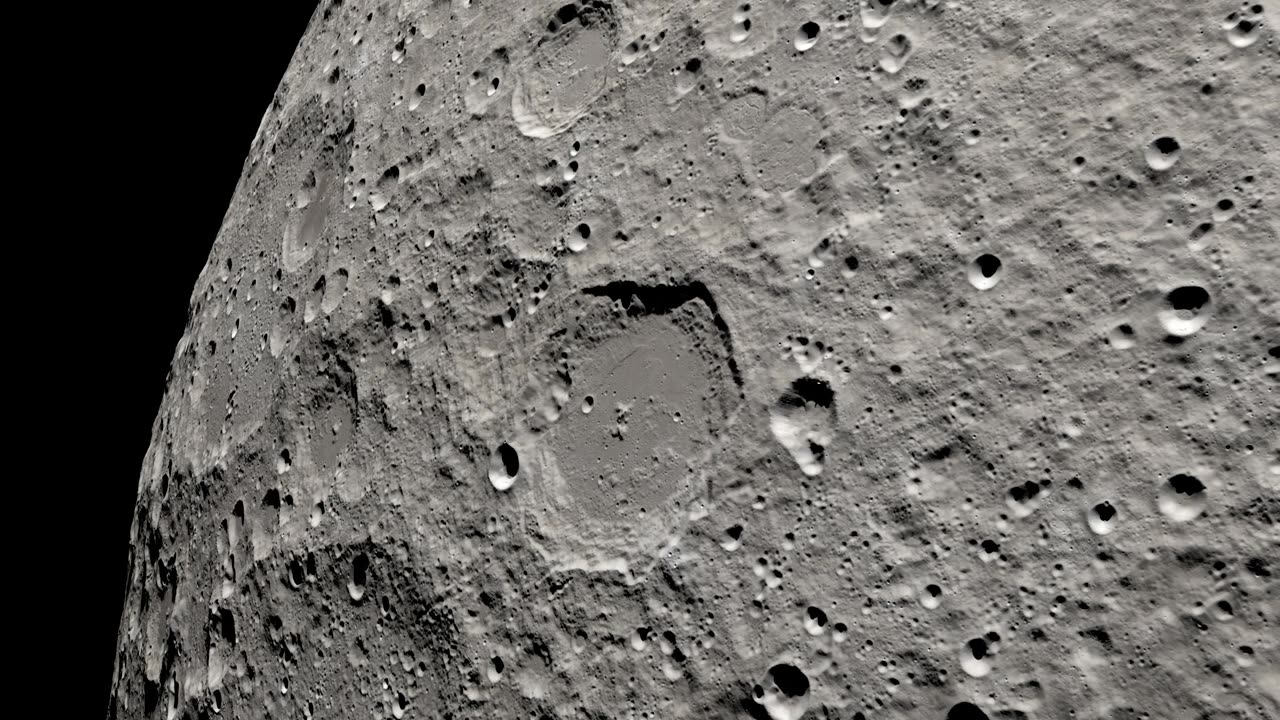Premium Only Content

NASA SPACE VIEW
**Space: Exploring the Vast Cosmic Frontier**
Space, the final frontier, beckons humanity with its infinite expanse, mystery, and potential. Beyond the confines of our planet, space stretches out endlessly, a canvas of darkness punctuated by the shimmering lights of stars, galaxies, and cosmic wonders. In this boundless realm, science, exploration, and imagination converge to deepen our understanding of the universe and shape the future of human existence. From the mesmerizing dance of celestial bodies to the technological marvels that carry us beyond Earth's atmosphere, space invites us to embark on a journey of discovery that transcends our earthly limitations.
**A Universe of Marvels: Stars, Galaxies, and Beyond**
As we gaze up at the night sky, we witness the beauty and grandeur of the cosmos. Stars, those luminous beacons of light, have fascinated and guided us for millennia. Each star, like our own Sun, is a fiery cauldron of nuclear reactions, forging elements that constitute the building blocks of matter. Some stars dazzle in solitude, while others join forces in galaxies, forming breathtaking cosmic tapestries. The Milky Way, our home galaxy, is a swirling conglomeration of stars, gas, and dust, harboring countless solar systems, including our own.
Beyond the Milky Way lies a vast expanse of space peppered with galaxies of all shapes and sizes. Spirals, ellipticals, and irregular galaxies each tell their own stories of cosmic evolution. Supermassive black holes reside at the centers of galaxies, their immense gravitational pull capable of warping spacetime and shaping the destiny of nearby stars.
**Exploring the Solar System: Planets, Moons, and Beyond**
Our solar system, a microcosm within the universe, showcases the dazzling diversity of celestial bodies. The Sun, a seething ball of nuclear fusion, is the gravitational anchor that governs the movements of planets, moons, asteroids, and comets. The inner rocky planets—Mercury, Venus, Earth, and Mars—dance in close proximity to their parent star, while the outer gas giants—Jupiter, Saturn, Uranus, and Neptune—command immense gravity and flaunt stunning rings and intricate moon systems.
Moons, these cosmic companions, hold secrets of their own. Europa, a moon of Jupiter, tantalizes scientists with its subsurface ocean that might harbor conditions conducive to life. Saturn's moon Enceladus spews geysers of water vapor into space, hinting at hidden liquid oceans beneath its icy surface. The largest moon in our solar system, Ganymede, surpasses the planet Mercury in size and captivates with its complex geological features.
**The Quest for Exploration: Spacecraft and Beyond**
Humanity's journey into space began with a curiosity-driven dream. The launch of Sputnik 1 by the Soviet Union in 1957 marked the dawn of the space age, sparking a global fascination with exploration beyond Earth. The Apollo program, culminating in the iconic Apollo 11 mission, fulfilled President John F. Kennedy's vision of landing humans on the Moon and returning them safely to Earth. Neil Armstrong's historic words—"That's one small step for [a] man, one giant leap for mankind"—resonate as a testament to human ingenuity and ambition.
Spacecraft, the messengers of our species, have transformed our understanding of the cosmos. The Hubble Space Telescope, orbiting Earth since 1990, has delivered breathtaking images of distant galaxies, nebulae, and stars, unveiling the hidden beauty of the universe. Robotic rovers like Curiosity and Perseverance have roamed the surface of Mars, analyzing rocks, seeking signs of past life, and preparing the way for human exploration.
**Challenges and Triumphs: Human Spaceflight**
Human spaceflight, while a symbol of human achievement, also poses immense challenges. The vacuum of space, extreme temperature fluctuations, and cosmic radiation demand advanced technologies to ensure the survival of astronauts. The International Space Station (ISS), a cooperative endeavor of multiple countries, serves as a testament to international collaboration in science, technology, and diplomacy. For over two decades, the ISS has been a microgravity laboratory where research is conducted on biology, physics, and materials science, offering insights into the effects of space on the human body and potential strategies for long-duration space travel.
**Beyond Earth's Grasp: The Quest for Other Habitats**
The desire to explore beyond Earth is fueled by the search for habitable environments and the pursuit of a backup plan for humanity. Mars, with its similarities to Earth, is a tantalizing target for colonization. SpaceX's ambitious plans envision a future where humans establish a self-sustaining colony on the Red Planet, relying on innovative technologies to harness resources, create habitats, and adapt to the challenges of a hostile environment.
Moreover, exoplanet research has unveiled a multitude of planets orbiting distant stars, some of which fall within the habitable zone—the region where conditions might be suitable for liquid water and, potentially, life as we know it. The James Webb Space Telescope, poised to launch, promises to revolutionize our understanding of exoplanets and provide tantalizing glimpses of their atmospheres.
**Confronting the Unknown: Dark Matter and Energy**
Even as we unravel the mysteries of the universe, dark matter and dark energy remind us of our incomplete understanding. These enigmatic substances, together constituting around 95% of the universe, defy direct observation but exert a profound influence on cosmic structures and expansion. Scientists are on a quest to decipher the nature of dark matter particles and the mechanisms driving the accelerated expansion of the universe.
**The Ethereal Frontier: Cosmic Phenomena and Mysteries**
Space is replete with cosmic phenomena that challenge our comprehension. Black holes, gravitational waves, and neutron stars push the boundaries of our understanding of physics and spacetime. The merging of black holes releases gravitational waves, ripples in spacetime that traverse the cosmos, offering insights into the nature of gravity and the behavior of matter under extreme conditions.
Gamma-ray bursts, some of the most energetic events in the universe, remain enigmatic in origin. These intense flashes of gamma-ray radiation occur when massive stars collapse or merge, offering glimpses into the processes that shape the cosmos.
**Preserving the Cosmos: Space Sustainability and Ethics**
As humanity ventures further into space, concerns about space debris and environmental impact arise. Thousands of defunct satellites, spent rocket stages, and fragments of previous missions orbit Earth, posing a collision risk to operational spacecraft. Mitigating space debris and developing sustainable practices are imperative to ensure the long-term viability of space activities.
Ethical considerations also come into play as we explore space. The potential for altering celestial bodies, such as terraforming Mars or mining asteroids, raises questions about our responsibility to preserve the intrinsic value of these cosmic wonders.
**Dreams of the Cosmos: Future Horizons**
The human thirst for exploration, innovation, and discovery continues to push the boundaries of what is possible in space. As we gaze at the stars, we glimpse our own potential—to journey beyond our planet, to establish new homes among the stars, and to deepen our understanding of the universe and our place within it. The cosmos invites us to dream, to strive, and to unlock the secrets of the universe, reminding us that the adventure of space is a journey that transcends generations and unites humanity in the pursuit of knowledge, wonder, and the stars.
-
 18:12:15
18:12:15
LFA TV
1 day agoLFA TV CHRISTMAS EVE REPLAY
123K14 -
 13:32
13:32
Scammer Payback
15 hours agoChanging the Scammer's Desktop Background to his Location
1.21K2 -
 4:21
4:21
BIG NEM
17 hours agoNikola Tesla's Secret to Cultivating Creativity & Genius
851 -
 15:03
15:03
The Anthony Rogers Show
1 day agoAnthony Rogers - Live at Cusumano's Pizza (Upstairs)
1671 -
 4:33:48
4:33:48
tacetmort3m
1 day ago🔴 LIVE - THE ZONE KEEPS PULLING ME BACK - STALKER 2 - PART 15
65.1K12 -
 22:45
22:45
Brewzle
21 hours agoI Went Drinking In A Real Bourbon Castle
46.5K4 -
 48:36
48:36
PMG
1 day ago $3.77 earned"Parkland Parent Speaks Out On Kamala Harris Using Victims"
38K12 -
 4:06
4:06
The Lou Holtz Show
19 hours agoCoach Lou Holtz’s Heartfelt Christmas Message 🎄 | Family, Faith & Notre Dame Spirit 💚 #christmas
28.1K -
![ROSEANNE BARR - Her Journey, TRUMP, and the MAGA GOLDEN AGE! [INTERVIEW]](https://1a-1791.com/video/s8/1/M/m/B/2/MmB2v.0kob.1-small-ROSEANNE-BARR-Her-Journey-T.jpg) 51:35
51:35
Dr Steve Turley
1 day ago $20.43 earnedROSEANNE BARR - Her Journey, TRUMP, and the MAGA GOLDEN AGE! [INTERVIEW]
62.7K54 -
 57:38
57:38
The Tom Renz Show
17 hours agoMerry Christmas - The Tom Renz Show Christmas
97.6K17